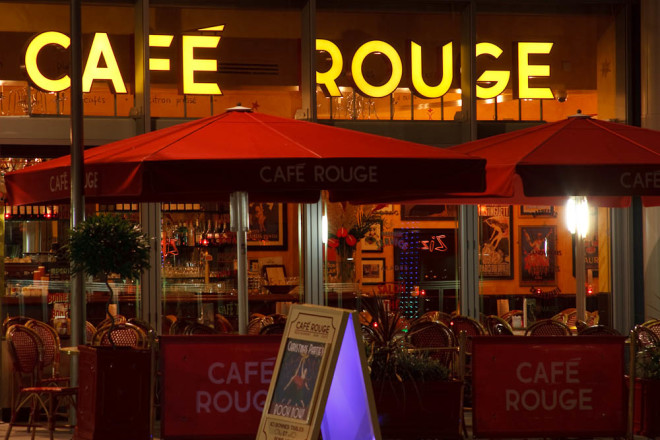The Latest On The Health Of The Restaurant Industry In The US

A recovering economy is good for business.
As we enter the fourth quarter of 2015, the conversation on the economy continues. Along with the economic recovery come questions on the health of the restaurant industry. Is it growing? Are more people eating out? What’s the outlook for the coming months?
In this article we’re going to take a look at recent news articles, reports and studies. We’ll share the latest on the health of the restaurant industry in the US.
The Restaurant Performance Index
The National Restaurant Association puts out a Restaurant Performance Index (RPI) that tracks the health and outlook for the US restaurant industry. Just released at the end of September, we’ll summarize their findings.
The RPI declined to its lowest levels in nearly a year in August. It was down 1.2% from July. Yet, despite the decline, August was the 30th consecutive month that the RPI was above 100. This signifies expansion in some indicators.
Additionally, the expectations index, though slightly down, still rose above 100 indicating that restaurant owners remain generally positive moving to the future.
According to a news release, restaurant.org says,
“The RPI’s August decline was the result of broad-based declines in the current situation indicators,” said Hudson Riehle, Senior Vice President, Research and Knowledge Group, National Restaurant Association. “Same-store sales and customer traffic softened from July’s strong levels, while the labor and capital spending indicators also dipped.
“Despite the declines, each of the current situation indicators were in expansion territory above 100, which indicates the restaurant industry remains on a positive growth trajectory,” Riehle added.
Bottom line: the Restaurant Performance Index is down, yet the restaurant industry remains positive. (tweet this)
- 56% report an increase in same-store sales over August 2014.
- 41% report an increase in customer traffic over August 2014.
- 63% report making a capital expenditure in the last six months.
- 44% expect higher sales in six months.
- 60% plan to make a capital expenditure in the next six months.
- 22% expect economic conditions to improve in the next six months.
Market Realist says continued growth is expected in the restaurant industry in 2015.

People eat out more when they have discretionary income.
Restaurant Job Growth
The National Restaurant Association reports that restaurants have added more than 1.8 million jobs since the end of the Great Recession. They expect continued growth in the year ahead.
The US Bureau of Labor Statistics reported that employment in food services continued an upward trend in line with its average monthly gains for the last 12 months.
One area of concern, however, is that job vacancies are becoming harder to fill. With 2015 marking the fourth straight year of more than 3.5% employment gains, there seems to be an increasing labor shortage.
Robert Krzak, president of restaurant industry recruiting firm Gecko Hospitality, says “It is a candidate-driven market – candidates can choose from an abundance of different opportunities right now.”
Because of the thawing of the economy and more restaurants opening, there are fewer job applicants than usual. As the economy strengthens, workers have been looking for jobs with more benefits and higher compensation.
These issues coupled with Chipotle’s desire to open 200 new restaurants in the coming year, inspired them to go on a hiring spree in September looking for upwards of 4,000 employees. Faced with a shrinking pool of applicants and needing to hire quickly, Chipotle decided to corner the employment market.
Analysts predict that hiring and retention will continue to be an issue for restaurant owners. In fact, owners say this is one of their biggest challenges.
An economy showing signs of recovery and a growing job market put extra pressure on restaurants as they increase customer traffic and need qualified staff. This trend will most likely continue into the future.
Higher Income Households Good for Business
Higher-income households account for nearly six in 10 dollars spent in restaurants. The number of higher-income households rose for the third consecutive year, which is a positive trend for the restaurant industry.
Because households with incomes higher than $100,000 are responsible for 40% of the total spending on dining out, and households with incomes between $70,000 and $99,000 account for 18% of restaurant spending, it’s a good sign for restaurants that higher income households are growing.
Restaurants: Economic Powerhouse
Americans are spending more in restaurants than in grocery stores these days. Just look at this staggering statistic: (tweet this)
More than two decades ago, Americans spent $162 in groceries for every $100 they spent in restaurants. But this past January, they spent nearly equal amounts of money in both places: $50.475 billion in restaurants and bars, and $50.466 billion in grocery stores.
This is due in part to an explosion of trendy, independent neighborhood restaurants. They’re small, intimate and personal. They’ve become an extension of the home and a comfy place to go after work. Driven by Millennials need for social interaction, a desire for local and sustainable food and a place to order what they want how they want it, restaurant sales are expected to hit nearly $709 billion this year.
Analysts expect sales will grow by $26 billion, and one in 10 Americans (over 14 million people) will work in the restaurant industry.
Employment in the industry is expected to hit 15.7 million within the next decade. That’s 1.7 million new jobs by 2025. Lastly, it’s expected there will be one million restaurants and food service locations in the United States by the end of the year. That means there’ll be 100,000 more restaurants than ten years ago!
In Conclusion
The growing economy coupled with much lower gas prices means consumers have more money to spend. Restaurant-goers will, barring any unforeseen catastrophe, continue to loosen their purse strings.
Analysts expect the economy to support increased and additional spending in restaurants in the months ahead.
People decide to eat out depending on their finances. If the economy continues to grow, and people’s discretionary income continues to grow, the restaurant sector can expect to grow right along with it. When people have jobs, they are more willing to spend money dining out than cooking at home.
What are your thoughts on the health of the restaurant industry in the US? Have you experienced increased customer traffic and a labor shortage? Please share your thoughts below – we’d love to hear them!
Images: Maria Ly and Brian Smithson

Leave a Reply